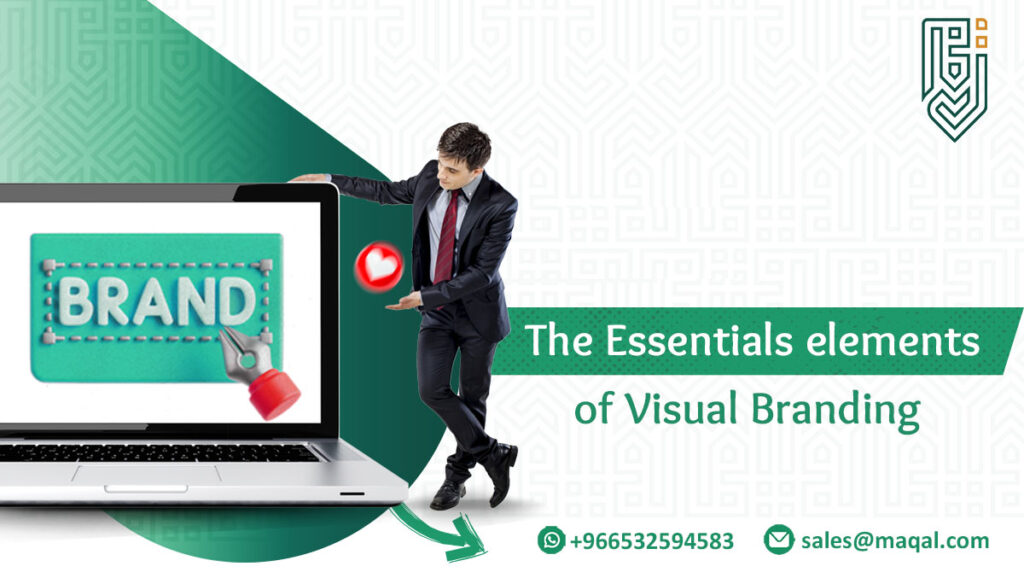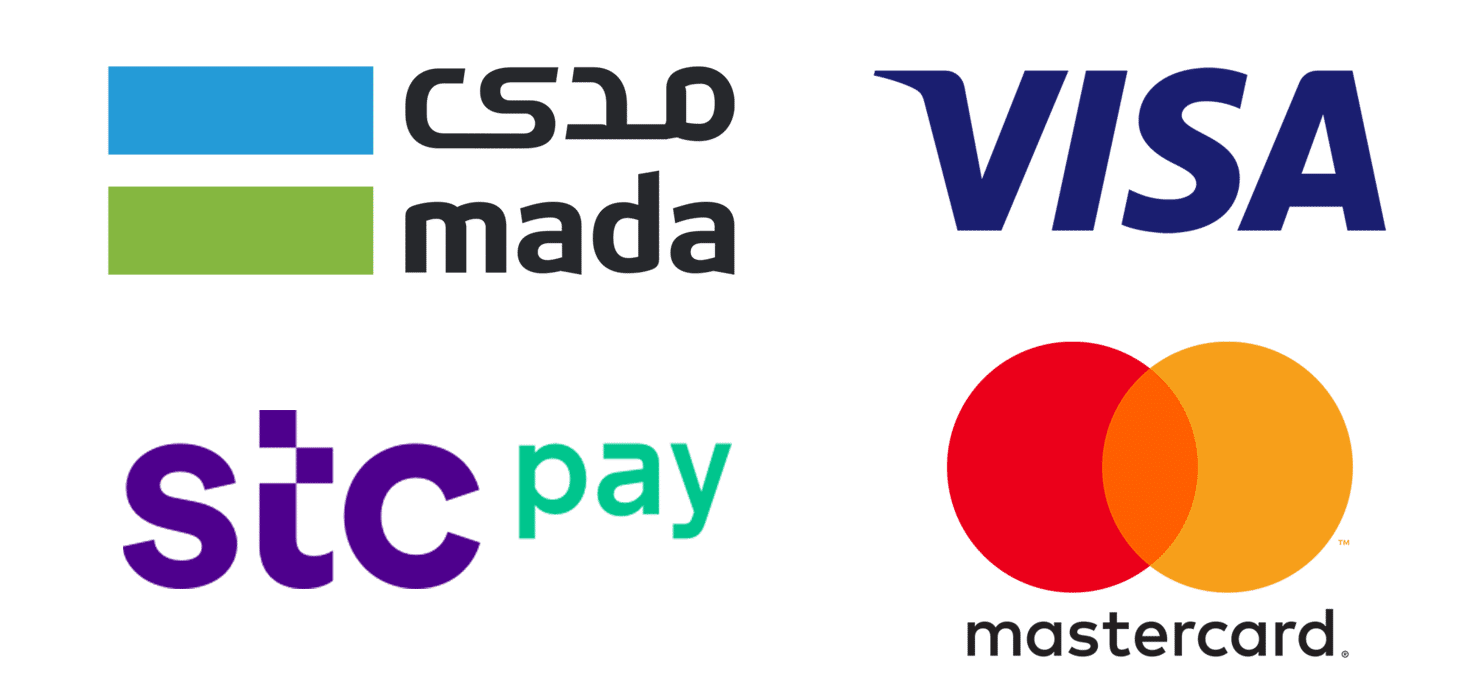A visual brand identity is the visual aspect of a brand and is anything visual that is produced by the brand, such as logo design, colors, images, fonts, and icons used to convey the brand’s message to customers. In this article, we will discuss the elements of visual identity and everything related to it.
What is visual brand identity?
Visual brand identity is all the visual images and information that represent and distinguish a brand. It’s everything a customer can visually perceive, from the logo to the interior design of the company’s website.
Therefore, the concept of visual brand identity and its elements go beyond logo design to building a brand personality and giving a distinctive voice to the business.
Designing a visual identity requires a lot of precision and care to avoid sending the wrong message to the recipient. That’s why many business owners turn to professional graphic designers to design a distinctive and clear logo and visual identity that positively represents their business and appeals to customers.
What are the visual identity elements?
A strong visual brand identity is comprised of various elements of a visual identity that work together to create a cohesive and memorable brand image. These brand identity components include:
1. Graphics and images: These are the most crucial elements of a visual identity. They are custom-designed by skilled designers using specialized graphic design software and tools. The design is chosen after conducting a thorough study of the business, its objectives, and the message it aims to convey to customers. Numerous creative ideas are gathered and refined into a design that forms the logo for the company or business.
2. Typography and print style: This refers to the font style, size, and formatting used in your branding. These details have a significant impact on the user. When designing a textual logo for a company, careful consideration must be given to the font style, weight, alignment, and all other details to ensure they align with the target audience’s preferences.
3. Color palette: The brand identity components include a carefully selected color palette. This palette typically consists of a primary color, a secondary color, and an accent color. Each color carries specific connotations and can evoke different emotions in the viewer. A skilled designer can strategically use color to reinforce the brand’s personality and message.
4. Photography: High-quality photography is a powerful tool for building a strong visual brand identity. Images can convey emotions, tell stories, and create a lasting impression. When used consistently across all marketing materials, photography helps to create a cohesive and memorable brand experience.
5. Brand consistency: Consistency is key to a successful visual identity. This means applying the visual identity elements consistently across all touchpoints, from the company’s website to its physical locations. This creates a unified and recognizable brand image.
Why does your company need a strong visual brand identity?
If I asked you what the most preferred drink in the world is, you would surely say Coca-Cola. This is the answer of anyone because Coca-Cola is the first thing that comes to mind for anyone when asked about the best drink globally.
It is the brand with the strongest and most famous visual brand identity among all global brands. The company has created a place for itself thanks to building a strong visual brand identity. It has managed to establish a strong visual presence that has enabled it to continue dominating the world of soft drinks thanks to:
- Its distinctive logo
- Keychains
- Varied bottles
- Different cans
- Its large buses that roam the streets to distribute the drink to stores
- Its huge billboards on the roads
- Stylish café refrigerators
- Diverse cups
Do people buy Coca-Cola because of its delicious taste?
You might find a local drink that tastes better than Coca-Cola, but experts agree that people buy Coca-Cola because of its visual brand identity, which has convinced consumers for over 130 years that Coca-Cola is something entirely different.
In reality, Coca-Cola is a sweetened drink like any other, but people drink it because it’s Coca-Cola, not because it’s a delicious drink. Therefore, a company’s visual brand identity is the most important part of its brand.
Its purpose is to highlight the brand’s core values. That’s why every startup needs to build a strong and cohesive visual brand identity that sticks in people’s minds and encourages purchasing.
How to achieve consistency in the components and elements of a visual identity?
First, the visual logo should stand out among many logos and represent your company and what it offers. The slogan is the phrase that should indicate what the consumer will get from dealing with you. It is written in a distinctive style.
The colors used: Each color has its psychological connotations, and care must be taken in using them according to the company’s field of work. For example, the colors blue and white are suitable for travel and tourism companies and hospitals, while red and yellow are suitable for restaurants, and so on. Value is the most important thing, as everything mentioned previously is meaningless if it is not linked to a real value provided to the user.
Everything the consumer sees, whether a physical product, logo, photographs, prints, designs, video, graphics, or animations, is a visual identity, and all of these components require attention and study. It is not preferable to prioritize the logo and ignore the rest of the components.
Even the people companies hire should possess qualities that reflect their visual brand identity and values. For example, sports shoe companies hire famous football players to advertise the shoes they produce, and this process can create generations of consumers.
Companies must also consider how their visual identities appear on mobile devices, as smart and fast things are more attractive to customers. Most consumers search for what they want through their mobile phones. In other words, advertising nowadays is all about how it appears on a phone.
Why should you develop and improve your brand?
Companies aiming for growth understand that a strong and consistent visual brand identity is key to building lasting customer relationships. By refining your visual identity elements, you can foster loyalty and ultimately drive sales.
How to Develop Your Brand?
After explaining the elements of a visual identity, let’s discuss how to develop your brand. This process requires strong expertise and a deep understanding of what the brand represents and who the target audience is. The goal is to create a consistent visual experience that clearly identifies your company, product, or service as a unique source.
The logo is a fundamental component of a visual brand identity and serves as its primary symbol. Its purpose is to distinguish your brand from others. Your visual identity is the visual representation of your company; it’s how you’re recognized when seen. Remember, your visual identity and your brand are not the same thing. Your brand is the value the customer receives when dealing with you, while your visual identity is the customer’s guide to recognizing you.
Need more clarification on visual brand identity and how to create it professionally?
Our service provides a cohesive and distinctive visual identity through articles written by professional designers. We have created visual identities for numerous companies, leaving a remarkable mark of success and significantly contributing to our clients’ distinction.
In our articles, we prioritize the design of a creative logo that reflects your company’s field of work and achieves great harmony with the other elements of a visual identity to form a unified image that represents your company to consumers and what it offers. Leave this task to MAQAL… because we strive for your success and a better future for you.
What is a Visual Brand Identity?
A visual brand identity encompasses all the visual elements that represent a brand and set it apart from competitors. It includes everything a customer sees, from the logo to the website design.
The concept of visual brand identity goes beyond logo design; it involves creating a brand personality and a unique voice for the business.
brand identity elements
visual branding elements are the components that make up a brand’s visual appearance. Key elements include: graphics and imagery, typography, color palette, photography, and tangible assets.
1. Logo
- The visual symbol of your brand.
- Should be versatile and adaptable across various platforms.
- Represents the essence of your brand
2. Color Palette
- Evokes emotions and creates associations.
- Should be consistent and complementary.
- Reflects your brand’s personality.
3. Typography
- The fonts used in your branding.
- Should be legible and convey the right message.
- Creates a consistent visual style.
4. Imagery
- The visual representation of your brand.
- Should be consistent with your brand’s values and target audience.
- Creates a visual narrative.
5. Tone of Voice
- The personality and style of your brand’s communication.
- Should be consistent across all channels.
- Creates a memorable and engaging experience.
6. Brand Values
- The core principles that guide your brand’s decisions.
- Should be authentic and resonate with your target audience.
- Create a sense of trust and loyalty
7. Unique Positioning
- What makes your brand different from the competition.
- Should be clearly defined and communicated.
- Creates a strong brand identity that stands out.
8. Brand Consistency
- Maintaining a consistent look and feel across all touchpoints.
- Reinforces your brand’s identity and builds recognition.
- Creates a cohesive and professional image.
By carefully considering these elements, you can create a strong brand identity that resonates with your target audience and drives business success.
Visual Elements Examples
Visual elements are the fundamental building blocks of any visual design. Here are some examples of key visual elements and how they’re used:
1. Line:
Example: A straight line in a logo can convey strength and stability, while a curved line can suggest elegance and fluidity.
2. Shape:
Circles often symbolize unity and completeness, while squares can represent stability and order.
3. Color:
Red is often associated with passion and energy, while blue can evoke feelings of trust and calmness.
4. Texture:
Example: A rough texture can create a sense of ruggedness or authenticity, while a smooth texture can convey sophistication and luxury.
5. Space:
Example: Negative space can be used to create a sense of simplicity and focus, while positive space can be used to create a sense of vibrancy and energy
6. Form:
Example: A three-dimensional form can add depth and realism to a design, while a flat form can create a sense of simplicity and modernity.
7. Value:
The use of light and dark values can create a sense of depth and dimension, and can also be used to create a sense of mood or atmosphere.
These are just a few examples of how visual elements can be used to create effective and engaging designs. By understanding the principles of visual design, you can create designs that are both aesthetically pleasing and effective in communicating your message.



